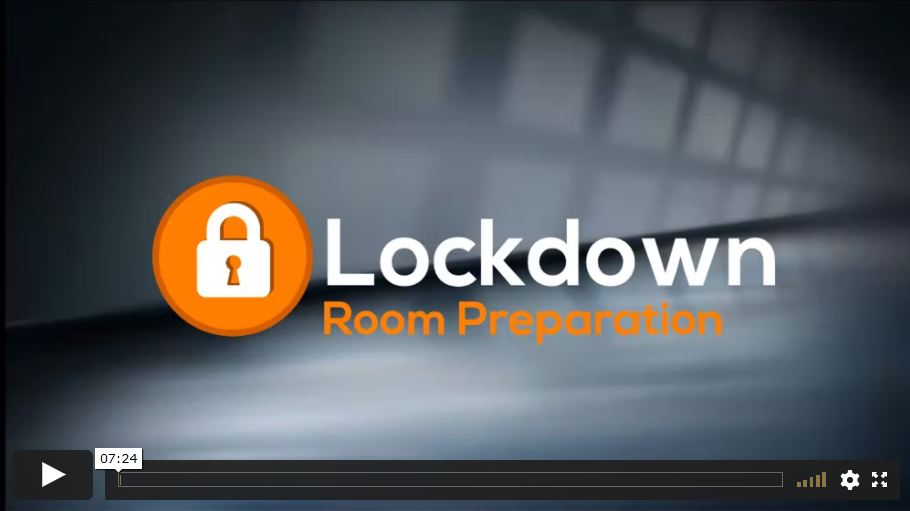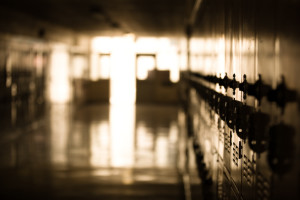Lockdowns require that building occupants not only secure themselves in a lockable space but that they conceal themselves within the room. Without proper planning, this may be a difficult task. Check out this video and our Room Preparation Checklist that cover the essential planning steps to prepare rooms for a Lockdown.
Lockdowns have become a fact of life in every school across the nation. Removing opportunity from an imminent threat at your schools is critical. Often overlooked is the average length of a lockdown in a real emergency, or even one where the threat is not quickly identified. Building occupants can expect to remain sheltered behind closed doors for several hours or more while police identify the threat and eventually clear every square inch of the school.
An essential element of lockdown is not only securing staff and students behind closed doors, but also keeping them calm and quiet. No small feat when you consider young children, special needs students or those students and staff who simply panic.
Preparing your room for the long haul can prove to be a life-saving preparedness action. Here are 6 simple steps that can ease the anxiety and increase the likelihood of an effective lockdown:
Step 1 – Establish a Safe Zone
If you are reading this article from your classroom or other school work location, perform the following tasks:
- Step outside your room and close the door.
- Assuming you have a window in your door, look into the window at all angles and identify those areas you simply can’t see. Note a landmark in the room to assist (i.e. “I can’t see anything to the left of the activity table”).
- Armed with this information mark this diagonal line on your floor using colored tape or other creative art to establish the room’s “safe zone”.
In the event of a lockdown, you now know the specific area of your room that is safe from view from the exterior. This is the area both you and any other students and staff will need to occupy in a lockdown.
The green triangle represents the room safe zone
Step 2 – Access the Safe Zone
Now take a look at this area carefully. Do you have the necessary resources and supplies within the safe zone to keep staff and students calm and safe? Consider the fact that when students are not calm, they are not quiet. When they are no quiet, they are simply not safe from a potential threat in the area.
So ask yourself, “how can I keep students calm for a long period of time?” Undoubtedly, the thought of keeping them occupied comes to mind. Does your safe zone have the necessary resources to accomplish this? Resources such as:
- computer workstations to play games or stream content
- books and other activities
- games
- toys that can be played with quietly
As critical as keeping students occupied is, staff must consider other resources necessary to manage a lengthy lockdown including:
- a bathroom receptacle such a 5-gallon bucket with a lid
- sanitary supplies such as toilet paper and hand wipesfood and water (In many districts where I have worked, staff have expressed success in requesting parent donations for food, such as a box of granola bars and water)
- food and water (In many districts where I have worked, staff have expressed success in requesting parent donations for food, such as a box of granola bars and water)
- first aid supplies
- communications such a phone or PA system
a typical lockdown survival kit
Step 3 – Assess Your Room
Regardless of whether your District has undergone a formal safety and security assessment of all school buildings, staff should proactively access their space for critical items that may require mitigation. Here are a few classroom assessment items to consider:
- Do all staff (teachers, subs, aides etc) that utilize the space have the ability to immediately lock the door?
- Do doors and locks function properly?
- Does your space have a form of communication to alert the main office or 911 of an emergency?
- Can visible glass be obscured by the use of blinds or other approved window coverings?
As effective as lockdowns have proven to be in saving lives, they can be extremely stressful for staff and students alike. Taking proactive steps to access and prepare your room before an actual lockdown can make a challenging situation easier and effective.
To learn more about lockdowns and how to effectively prevent and manage critical incidents in your schools, be sure to check out our safety, security and emergency preparedness programs.








